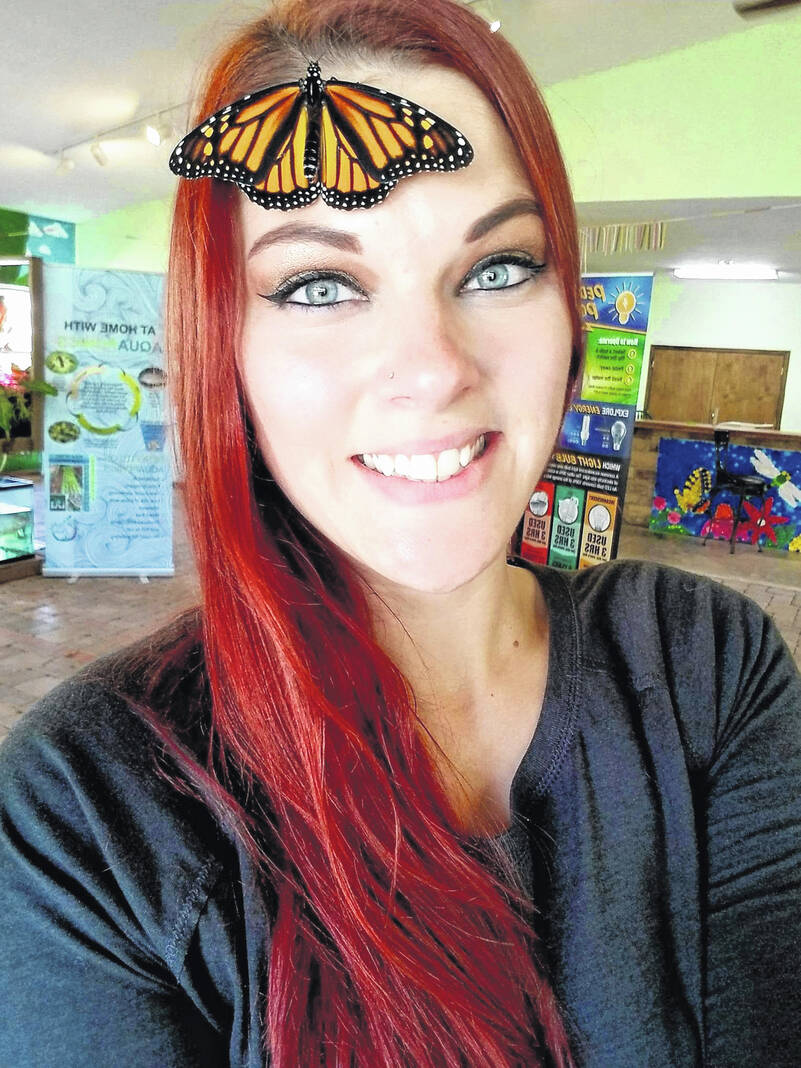
By Megan Hammaker
Darke County Parks
Spring is just a little over a month and a half away now, can you believe it?! It’s time to start making garden plans and buying seeds. When I start thinking about my garden last summer, I immediately think about the bees that were buzzing around and the butterflies that would flutter around from plant to plant. Shortly after I purchased my home in 2014, I decided to set aside space not only for a vegetable garden, but also for a pollinator habitat. Pollinators play a vital role in the reproduction of a massive proportion of our flowering plants. In fact, pollinators and flowering plants have evolved together for millions of years and depend heavily on each other to survive. The relationship between flowering plants and pollinators is ancient and intricate. With the explosion of the human population peaking in the late 60s, agriculture grew rapidly to support us. Habitat loss, due to agriculture and land development, is one of the largest contributors to the decline in pollinator populations. However, we need agriculture…there’s no arguing that. We also NEED our pollinators. According to Forbes, “Every season, pollination from honey bees, native bees, and flies deliver billions of dollars in economic value. Between $235 and $577 billion worth of annual global food production relies on their contribution.” Pollinators have a huge economic value! So, the question is, how can we sustain our ever-growing population with agriculture and also help sustain our pollinators? The answer is, integrating sustainable farming practices, reducing pesticide use, and creating habitat.
The good news is, since the 1960s a lot has changed in the agriculture industry that has had a tremendous impact on our pollinators and other wildlife. One person that was a catalyst in this movement, was Rachel Carson. If you’ve never read her book “Silent Spring”, you definitely should. After her book was published in 1962, the government revised the way they regulated chemicals. Prior to this, the government more or less just made sure the chemicals were effective. They weren’t looking into the effects that they may have on the environment. “Silent Spring” was a spark that fueled environmental awareness, calling politicians to act. Following “Silent Spring” and many environmental crises that continued throughout the 1960s, the EPA was created and the very first Earth Day was celebrated in 1970. In 1976 the EPA banned DDT, an insecticide that was once commonly used, with such adverse environmental effects that it even poisoned Bald Eagles and prevented them from producing strong enough eggshells to successfully hatch offspring. The banning of DDT has had an incredibly positive impact on the environment. Without “Silent Spring” and the call to action that followed, who knows where we’d be? The changes that followed the creation of EPA have been vital for the environment, but there’s still more that can be done.
If you’re interested in helping pollinators, there are a few things that you can do at home that can make an impact. For starters, put down the pesticides or at least reduce your usage of them. Do a little research and see if there is an alternative to the pesticide you’ve been using. If you HAVE to use them, make sure you’re applying them correctly. Next, find an area on your property and convert it to a pollinator garden. You may not think you have enough space, but even the smallest patch of habitat can help. Last year, I recorded several species of butterflies on my property, including Red Admiral, Black Swallowtail, Monarch, American Snout, Eastern Comma, and even Giant Swallowtail…and I live on less than an acre in town! Lastly, one of the most impactful things you can do, is to become an advocate. Come to pollinator programs at the park, learn their importance and discover actions you can take to help them, and then share that information. Know a farmer? (Who am I kidding, this is Darke County, we all know a farmer!) Talk with your farming friends and ask them what kind of sustainable farming practices they have implemented to help pollinators. If they haven’t yet taken action, maybe you can help them to do so! It can be something as simple as planting milkweed in filter strips or having an area on the farm that is left to go “wild”.
If you are interested in starting a pollinator habitat, be sure to attend our upcoming program “Planting for Pollinators” in March. You also won’t want to miss our annual Native Plant Sale on June 3rd! For more information, call the nature center at 937-548-0165.




